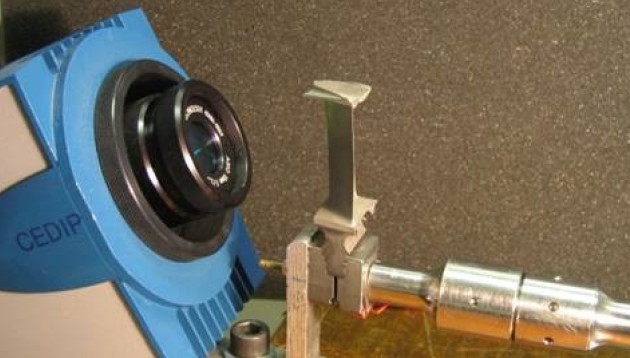Development of the thermosonic method of NDT
This is a joint project with Professor Darryl Almond at University of Bath. The thermosonic technique uses a pulse of high power ultrasound in the 20-100 kHz frequency range to excite the test structure; the resulting vibration field causes crack surfaces to rub, so generating heat which causes a transient temperature rise that is detected by a thermal imaging camera. The technique was recently developed in USA, but its sensitivity in different circumstances has not been defined and the method has not been engineered to allow reliable, reproducible testing. This project aims to clarify the mechanism of heat generation at a crack and to identify the amplitude and distribution of the vibration field required to obtain reliable defect detection at different locations in the structure. An excitation system will then be designed that is easy to apply in a reproducible way and the system will be tested on a variety of components.

References
Barden, T.J., Almond, D.P., Morbidini, M. and Cawley, P. 'Advances in thermosonics for detecting impact damage in CFRP composites', Insight, Vol 48, pp90-93, 2006.
Morbidini, M. and Cawley, P. 'The detectability of cracks using Sonic IR', J Applied Physics, Vol 105, article 093530, 2009.
Morbidini, M. and Cawley, P. 'A calibration procedure for sonic infrared nondestructive evaluation', J Applied Physics, Vol 106, article 023504, 2009.
Morbidini, M., Kang, B. and Cawley, P. 'Improved reliability of sonic infrared testing', Materials Evaluation, Vol 67, pp1193-1202, 2009.


